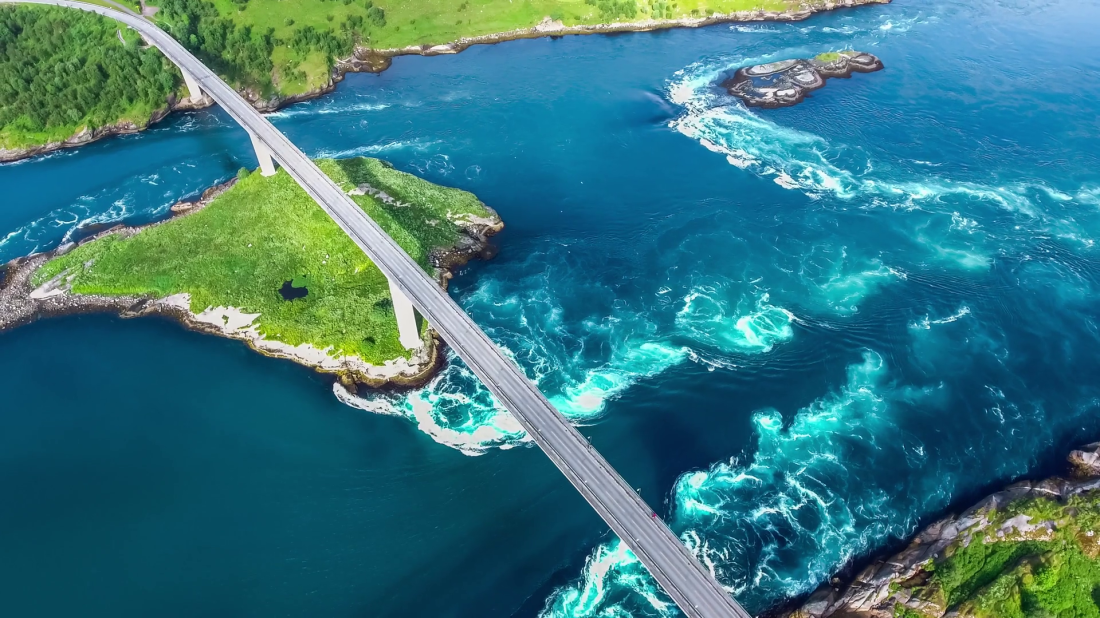Saltstraumen Video Blocks
Video Blocks
The strait at Saltstraumen is one of the most interesting straits on the planet, and it has to do with more than just its notable beauty. Saltstraumen is the location of one of the strongest tidal currents in the world. When the tides come in and out from the large bodies of water on either side of the strait, the water is confined to a much smaller space in the strait and rushes through at speeds up to 7 knots on inflow, and 8 knots on outflow. With water speeds like this, whirlpools form in the strait that can reach up to 10 meters in diameter. The water isn’t always rushing though. Since the tide comes in and then out, there is a point where the water is somewhat calm and crossable while everything is “turning around”. As the Earth spins, the sides closest and furthest from the Moon will experience high tide, and the perpendicular sides will be at low tide. So while the location is transitioning from being in a high tide orientation to a low tide orientation there is a time when the water is no longer being moved by the tidal force.

The Strait at Saltstraumen is able to go at speeds up to 8 knots, which is equal to 9.2 mph. I think it is interesting that this could be the strongest tides in the world, even though in a car the speed would seem really small. This is because it’s in an enclosed space. It’s such a beautiful place in Norway that I would love to visit!
LikeLiked by 1 person
Wow, this is absolutely fascinating and beautiful! I knew tides could be drastic, but I didn’t realize they could cause so much extraneous motion (whirpools, etc.) besides the rising and falling of water. This post also helped me recognize that the magnitude of tides depends largely on how constricted the water is, i.e. it makes sense that the water would rise and fall further if it is confined to a smaller space, so we don’t observe tides nearly this large on the open ocean.
LikeLike
From a TA: It would be interesting to see how fast the currents are during high tide and low tide. I never knew about this body of water so it’s pretty cool!
LikeLike